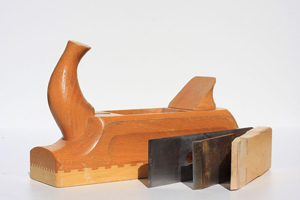
Source: Doppelhobel, Knobinap, Wikimedia
How many woodworking tools can you name? These will include what you think of as classic tools: a hammer, a saw, a screwdriver, a crescent wrench, a pair of pliers. What else comes to mind? Some other tools are levels, drills, and planes, and you could even count sandpaper as a tool. You may or may not be familiar with such tools. Maybe you have some of these tools in your house, your garage, or your tool shed.
If there is a nail stuck in a board that you want to get out, how would you get it out? What tool would you use? Actually, it depends on whether the nail is flush with the surface or slightly raised, or whether the pointed end of the nail is exposed at all on the other side of the board. The point is that you can own all of these tools and even know how to use them but still not be very good at knowing when to use them. This is not a lesson on using woodworking tools, though, so if you have such a nail in such a board, you will have to look up a YouTube video on getting out nails. This lesson will not help. This lesson will, however, help you think about the tools you have for figuring out what words mean, both basic definitions and definitions that depend on context.

Source: Filos segundo logo (flipped), Filosofias filosoficas, Wikimedia
You have probably already looked at the other lessons in this module: lessons on roots and affixes, denotation and connotation, context clues, origins and meanings of foreign words, cognates, and reference materials that help determine word meanings. These lessons told you HOW to use these word discovery tools. This lesson will give you practice in knowing WHEN to use one of these tools rather than the others.
Sometimes, several tools will be appropriate in learning about a word; it will depend on how deeply you want to investigate a word’s meaning. Other times, the tools will give you more information than you need to understand a passage of reading, but the information will be interesting to use nevertheless. Knowing about words and being interested in words are attributes of a student who is a good reader and a good writer.